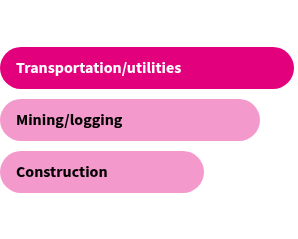Thirty-one major work stoppages occurred in 2024, resulting in 3.4 million days of idleness involving 271,500 workers.
The Bureau of Labor Statistics defines a major work stoppage as: a strike or a lockout that involves at least 1,000 workers and lasts one full shift at the establishment where the stoppage initiated.
How common are work stoppages?
There have been an average of 18.3 major work stoppages per year in the last decade, down from an annual average of 289 in the 1970s.
The number of workers involved in work stoppages has fallen in recent years as well. In 2024, a total of 271,500 employees were involved in work stoppages. That’s down 66% from 795,000 in 1980, and down 89% from the nearly 2.5 million employees in stoppages in 1970.

How many workers are union members?
The decline in work stoppages comes as the number and proportion of union workers has fallen since the 1980s. In 1983, there were 17.7 million such workers, about 20% of employees. There were 14.3 million such workers in 2024, representing 10% of employees.
Where does this data come from?
This data comes from the Bureau of Labor Statistics work stoppage database. The agency notes that the data is “gathered from public news sources, such as newspapers and the Internet.” The data does not distinguish between strikes, which are usually initiated by workers, and lock-outs, which are typically initiated by management.
Read about labor force participation, how many people are unemployed, and get data directly in your inbox by signing up for our newsletter.
Keep exploring
Page sources and methodology
All of the data on the page was sourced directly from government agencies. The analysis and final review was performed by USAFacts.
